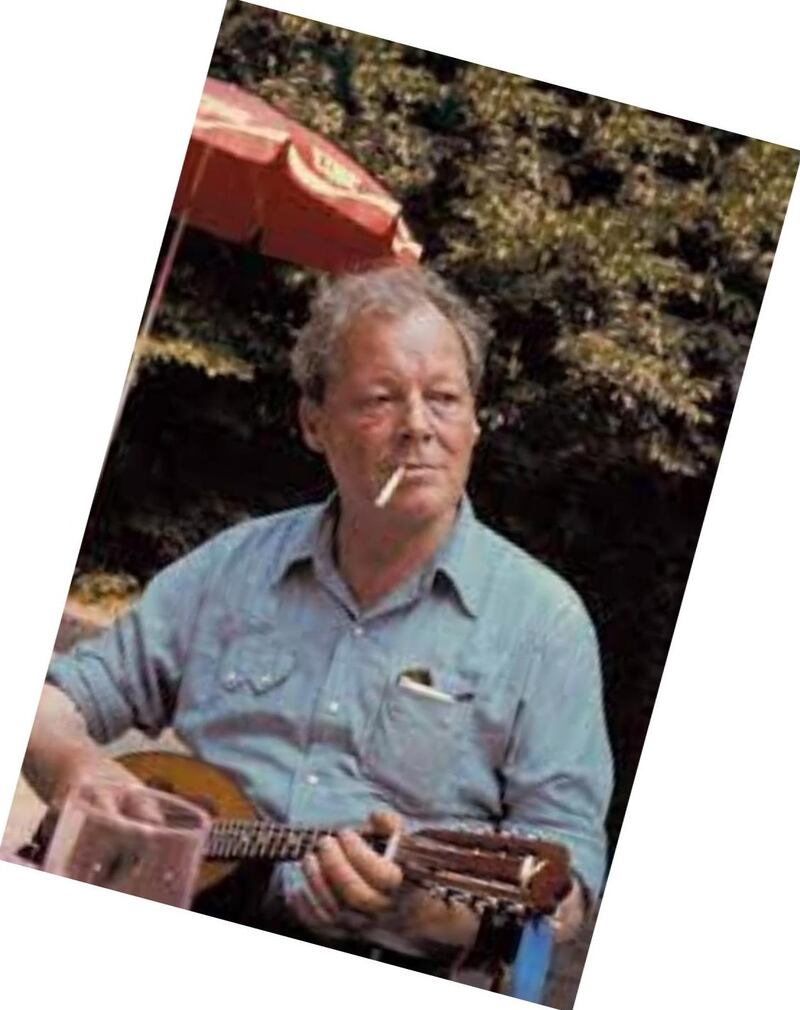With the race wide open and less than a month to go, Germany’s September 26th federal election has all the hallmarks of a vintage campaign.
Take Berlin’s leafy Dahlem district, where the centre-left Social Democratic Party (SPD) hopes to sustain its poll lead for candidate Olaf Scholz by hanging iconic posters from its glory days half a century ago.
Residents have been surprised with billboards of a smoking, mandolin-strumming Willy Brandt, last seen in 1972. As a cool bringer of social-liberal change, Brandt was elected chancellor by a devoted army of younger Germans, anxious for a progressive alternative to the starched-collar postwar years of Konrad Adenauer.
Now the SPD hopes these posters will win back again, for the post-Merkel era and Olaf Scholz, those younger Germans of 1972 – now retired.
Not to be outdone, Angela Merkel’s Christian Democratic Union (CDU) is digging deep into its own electoral chest to recycle one of its campaign favourites: what Germans like to call a “rote socken” or red socks campaign.
Whenever the CDU fears losing power, it warns of the inevitable “chaos” that will loom if voters are foolish enough to sideline it in opposition and choose a leftist government instead. Such “red socks” agitation helped Helmut Kohl back into power for a fourth and final term in 1994, but not a second time four years later.

A similar scenario looms now after four Merkel terms, with her centre-right party polling as low as 20 per cent. Alarmed CDU figures, and their Bavarian Christian Social Union (CSU) allies, are stepping up each day – with growing frequency and urgency – their warnings of a looming leftist disaster.
At the weekend CSU leader Markus Söder predicted “massive tax increases, instability and a departure of Germany from Nato” if voters choose an SPD-led leftist government with the Greens and the post-communist Linke (Left Party).
Untested
This untested three-way alliance, known as R2G (two reds and green), would have 48 per cent support by current polls, enough for a parliamentary majority. But what is arithmetically possible remains a political long shot.
The Linke is the political heir to East Germany’s communist Socialist Unity Party (SED) and, though an acceptable coalition partner at state level, is still untested in federal government.
Three decades after German unity, echoing the Greens in years gone by, the Linke is a house divided into pragmatic and fundamentalist wings. The latter is ascendent in this campaign, promising significant boosts to social spending financed by a wealth taxes.
On foreign policy, the hard left Linke opposes all German military deployments and Nato membership and demands a “collective security system including Russia with disarmament as a main goal”.
The disastrous situation in Afghanistan has given real-world urgency to a previously theoretical discussion – and underlined R2G’s long-shot nature.
SPD candidate Scholz says he will only head a government that “clearly” stands for the transatlantic alliance – but has refused to rule out an R2G alliance “out of respect for voters”.
Senior SPD strategists name two reasons for keeping R2G alive: to placate sizeable leftist camps in its own ranks and in the Green Party; and to keep open strategic options – and pressure potential – ahead of what may be complicated coalition talks.
Expert timing
With expert timing, Angela Merkel joined the fray on Tuesday – for the second time breaking her own promise not to get involved in the election.
Asked about claims Scholz is copying her low-key political style, Merkel responded: “With me as chancellor, there’d never be a coalition with the Linke involved. Whether Olaf Scholz shares this view is an open question.”
So which strategy will yield more votes: a disinterred Willy Brandt strumming along to SPD leftist ambiguity, or an Angela Merkel blessing for the CDU’s revived red socks campaign?
For political scientist Jürgen Falter, the CDU push is “no doubt an act of desperation... but is politically legitimate and by no means without prospects.”
And what of their rivals?
“We know there are many SPD and Green supporters against such a [R2G] coalition,” said Falter, political scientist at the University of Mainz. “With the Linke bogeymen, they could well be dissuaded from voting for their preferred party.”





